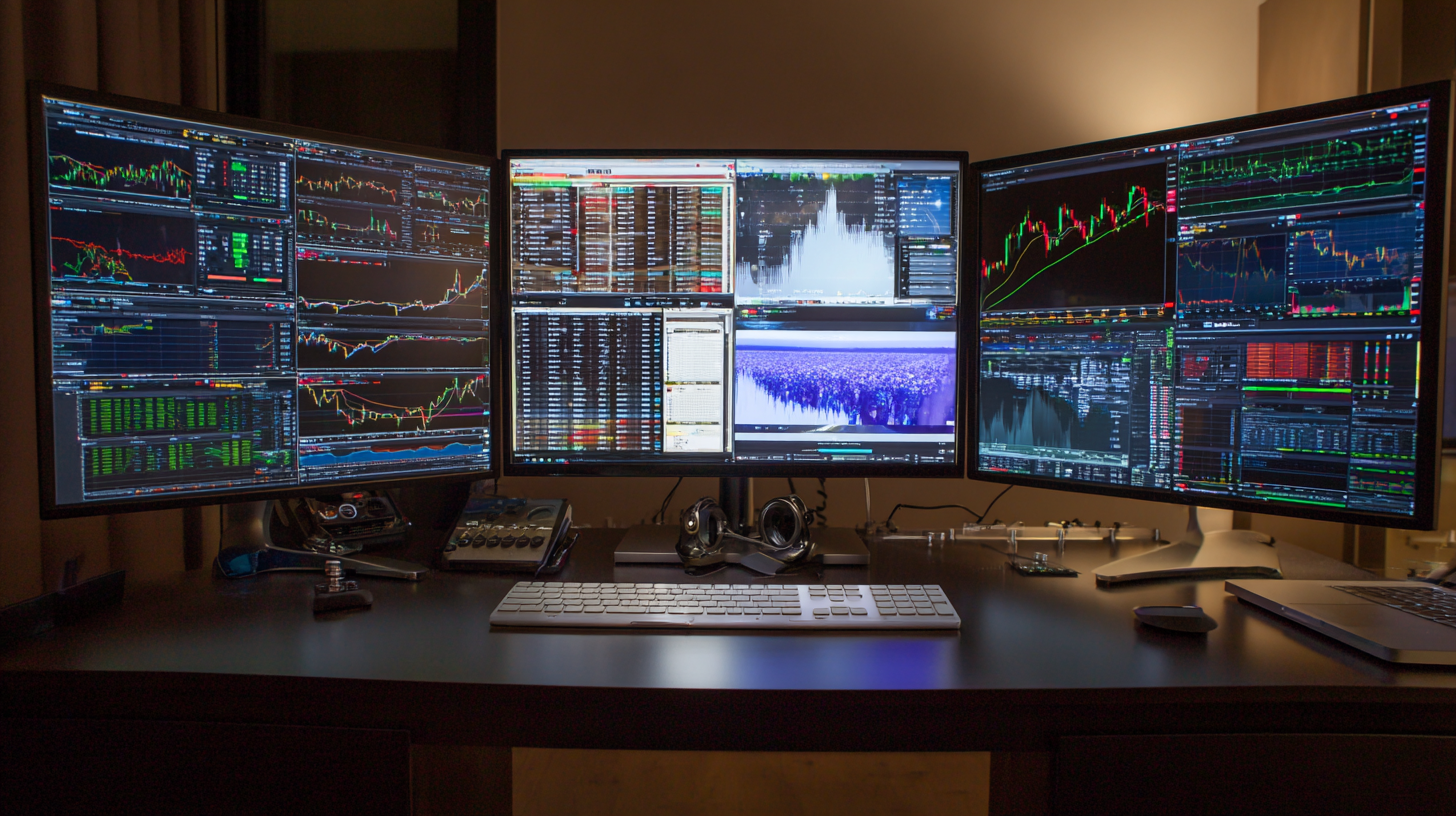 No. 14, Building 2, No. 367 Beijing Road, Chengdu Economic and Technological Development Zone (Longquanyi District)
No. 14, Building 2, No. 367 Beijing Road, Chengdu Economic and Technological Development Zone (Longquanyi District)

In the increasingly competitive world of mining and mineral processing, the quest for improved efficiency and productivity has never been more critical. A pivotal component of this endeavor lies in the use of advanced screening technologies, particularly the 5-Stack Screen, which has emerged as a game-changer in material separation. According to a recent industry report by Global Market Insights, the demand for high-performance screening equipment is projected to grow by over 7% annually, highlighting the essential role of innovations like the 5-Stack Screen. This technology boasts a significant increase in throughput and accuracy, making it a top choice for companies aiming to optimize their operations. However, selecting the right supplier of such sophisticated machinery is crucial, as it directly impacts performance and maintenance. In this blog, we will evaluate the leading 5-Stack Screens available on the market today and provide insights on how to identify a quality supplier to ensure optimal performance and a solid return on investment.

In the realm of industrial filtration and separation technology, stack screens have emerged as essential components for optimizing process efficiency. This blog delves into the performance metrics of China’s top five stack screens, highlighting their capabilities in diverse applications. Each screen type brings unique attributes to the table, enhancing operational throughput and product quality. By evaluating factors such as filtration accuracy, flow rate, and durability, we can determine which stack screens offer the best balance of efficiency and cost-effectiveness.
To provide a comprehensive assessment, we will explore the technical specifications and user feedback for these leading models. Key metrics such as ease of maintenance, energy consumption, and adaptability to different materials will be analyzed. With manufacturers continually innovating and improving their designs, understanding these performance metrics is crucial for industries aiming to make informed choices when it comes to selecting stack screens for their specific needs. As we evaluate the top five stack screens, we aim to illuminate their potential impact on enhancing operational performance in various sectors.
This chart evaluates the performance metrics of the leading stack screens based on various criteria such as durability, efficiency, and maintenance needs.
When examining the manufacturing landscape of stack screens in China, it’s clear that innovative techniques play a pivotal role in elevating performance standards. Recent industry reports indicate that advanced manufacturing methods have allowed Chinese manufacturers to reduce production costs by up to 30% while increasing product durability and efficiency. Specifically, the adoption of CNC machining and automated assembly lines ensures precision in the design and fabrication of stack screens, which results in enhanced screen longevity and reduced maintenance needs.
Tip: To maximize the performance of stack screens, consider sourcing products that utilize these advanced manufacturing techniques, as they often deliver better results in terms of operational efficiency and lifespan.
Moreover, China's leading stack screen manufacturers are increasingly focusing on sustainable practices, integrating eco-friendly materials and energy-efficient processes. Reports from the Global Association of Screen Manufacturers highlight a growing trend, with 40% of manufacturers now implementing green technologies, which not only meet regulatory demands but also appeal to environmentally conscious consumers.
Tip: Always inquire about the manufacturing processes and materials used in stack screen production to ensure that you’re investing in both performance and sustainability.
The global market for stack screens has recently seen a significant uptick in demand, with projections indicating a compound annual growth rate (CAGR) of 6.5% through 2028. Chinese manufacturers, known for their innovation and cost-efficiency, are making substantial strides in this competitive landscape. According to a report by Mordor Intelligence, Chinese stack screens accounted for approximately 30% of global market share in 2022, reflecting their growing influence and technological advancements in screen design and functionality.
Comparatively, international competitors, particularly from the United States and Europe, focus heavily on high-performance features and *premium pricing strategies*. A recent study by Technavio highlights that North American stack screens lead in terms of advanced technology, particularly in areas like energy efficiency and durability. However, Chinese firms leverage their manufacturing capabilities to offer competitive pricing without compromising on quality, making their products increasingly appealing in both domestic and international markets. As industries worldwide seek to optimize performance while managing costs, the debate over the effectiveness and viability of Chinese stack screens versus their international counterparts continues to heat up.

When it comes to selecting the right stack screens, customer reviews and feedback serve as invaluable resources that guide potential buyers in making informed decisions. Users often highlight the importance of screen durability and the ability to withstand various environmental factors. For instance, many appreciate models that offer reinforced materials, ensuring longevity even under challenging conditions. Analyzing customer feedback reveals a common theme: the most praised stack screens are those that combine resilience with ease of installation, enabling users to set them up without professional assistance.
Moreover, performance is a critical aspect discussed in reviews, particularly concerning visibility and clarity of the display. Customers frequently commend stack screens that enhance visibility without compromising image quality. Reviews also emphasize the significance of low maintenance needs, as users prefer screens that deliver optimal performance with minimal upkeep. By examining these insights, it becomes evident that the best stack screens not only meet practical performance benchmarks but also align with user expectations for functionality and convenience, thereby enriching the overall experience.
The evolution of stack screens in global industries, particularly within the automotive sector, marks a significant shift towards integrating advanced technology into vehicle design. As the industry moves into a more competitive era, characterized by a focus on differentiation, stack screens are emerging as a critical component of the intelligent cockpit. These screens not only provide essential vehicle information but also enhance user experience through advanced connectivity and interactivity. The transition to smart cockpits can be likened to the revolutionary influence of smartphones; just as the iPhone reshaped mobile technology, stack screens are set to redefine the automotive landscape.

Looking ahead, the trend toward smarter, more responsive stack screens is evident. They are evolving to accommodate diverse functionalities, transforming how drivers and passengers engage with their vehicles. As companies invest heavily in research and development, we anticipate features such as seamless integration with personal devices, enhanced voice recognition systems, and adaptive interfaces that learn user preferences. This evolution is not just about adding more technology, but rather about creating intuitive, user-friendly experiences that elevate the driving journey, thus setting a new standard for automotive innovation.